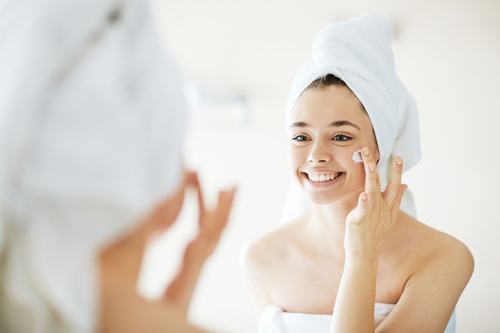Whoever invented the gel manicure was a genius. Two-plus weeks of chip free, perfectly shaped nails..yes please! Sadly though, they represent a slightly higher level of commitment than your average manicure. If you don’t remove them in the right way, you could end up with damaged and weak nails. Fear not! I can help you understand the safe way to remove gel nails and make sure you can maintain healthy nails to keep on enjoying that gel look.

Step 1: Nail file time. The grittier the better. Gentle just wont cut it. Think sand paper (just please don’t use actual sand paper). Start to buff off the first shiny layer of polish so that the nails look matte and scratched. Don’t be afraid to buff. Remember that there are several layers of gel between the file and your nail, so don’t be afraid of damaging your nail, that’s not going to happen.
Step 2: Acetone baby. Get prepared with acetone, 10 cotton wool pads and 10 rough squares of foil. First, soak a cotton wool pad in acetone, and I mean soak. Fold the cotton wool into a semi-circle and place on your fingernail, covering completely. Wrap over the cotton wool with the foil. Make sure it’s tight. Top tip – make sure the shiny side of the foil is in contact with the cotton wool. Carry on until you’ve completed the whole hand. I find it easier to complete one hand at a time, otherwise things can get tricky.
After about 15 minutes, check to see how much you’re flaking. Some polish will flake right off. Others might require a little more encouragement. What you are looking for is for the gel polish to start lifting and rolling up in the corners. Once it looks like they are ready, grab an orange stick and push the polish off your nail-bed horizontally and gently. Be careful not to dig in on stubborn spots. If it’s not coming away easily, pop some more acetone on some cotton wool and re-wrap the nail. Repeat.
At this stage, your nails will look dry, but don’t worry. It’s only temporary. After a round of nourishing cuticle oil, your nails will be gleaming and healthy.
Once you’ve removed all the gel, I like to take a moment to wash my hands to get rid of any excess gel flakes. Then you can get on with a DIY manicure to get your nails back into shape. File your nails down slightly if you want to lose some length. Then my go-to product is the Nailtiques Formula 2 Kit. This contains everything you need to keep your nails healthy and ready for another gel manicure. Start by applying the Formula 2 polish. Apply 1 layer per day for 1 week before removing and starting again. This will give your nails the nourishment they need to stay healthy and strong. The kit also includes a cuticle oil known as Oil Therapy and Cuticle and Skin Gel. Use the oil daily on the cuticles just before bed and rub the gel into your nail-beds in the mornings. You nails will thank you for it, trust me.
If you take one thing away from this post though, please for the sake of your nails, don't peel the gel off. EVER. I know it’s so tempting. It's occasionally satisfying, but it also can take off layers of your natural nail in the process. It’s not worth it. Yes it might save time, but it will cost you healthy nails. If you want to avoid the hassle, you can always book in with your salon who will remove them perfectly for you.
So there you have it. How to remove your gel manicure the safe way. Give it a try and let me know how you get on.
xoxo




